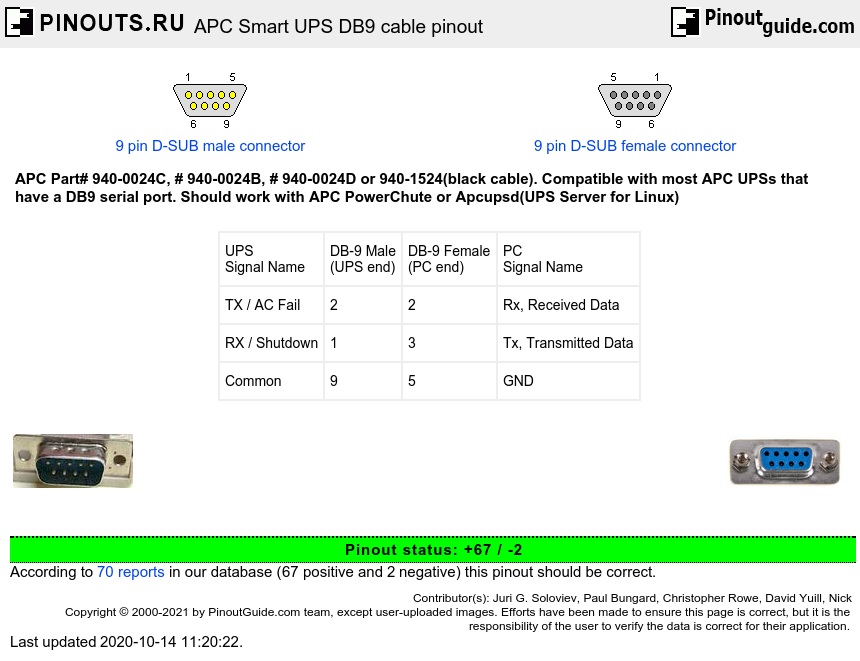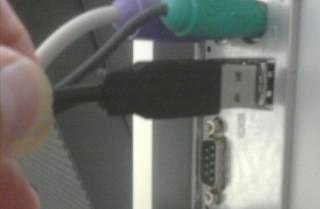Apc Ups Serial Port Settings
Posted : adminOn 4/21/2018

Installation and Configuration of a APC UPS using apcupsd Installation and Configuration of a APC UPS using apcupsd This web-page consists of four sections: Introduction, installation, configuration, and statistics. Introduction Since one of our machines is configured as print server and because it does other monitoring jobs, I wanted to equip it with an uninterruptable power supply (UPS). Having read already years ago, that there are Linux drivers for UPS's from APC (American Power Conversion) and having seen such a device in an electronics store (Mediamarkt) for Swiss Francs 79.- (about Euro 50.-), I bought the UPS 'APC Back-UPS CS 350 Battery Backup 350'. Installation of Hardware and Software The installation of the hardware is easy and explained in the manual (and thanks to the company APC there is a printed manual included, not just a CD, which needs a Micro$oft program to read it). Besides the power cables I also connected the data cable, which on one end (at the UPS) has a RJ-45-like plug and on the other end (at the PC) an USB plug. Software installation under Debian (Sarge) Linux with Kernel 2.4.26 is easy as well: apt-get install apcupsd (and answer 'Y' when asked during installation) 3. Configuration of apcupsd Useful information about the configuration of apcupsd can also be found on (there, click on 'Online Manual') Should you have a 2.6 Kernel, such as Kernel 2.6.7 as we use it, you should first do a few steps (if you use a 2.4 kernel, such as kernel 2.4.26, as we did, skip the following lines): - Add the following line into your /etc/fstab: none /sys sysfs defaults 0 0 - Then enter mount /sys - Make sure, the USB subsystem is there and enter ls -l /sys/bus/usb/drivers - If 'hiddev' is not there, you have a problem.
Systerac Tools 6 Premium Serial Port there. We had this problem as well after having upgraded from a 2.4 to a 2.6 kernel and got an error-message when entering apcaccess. I did two things, which helped to resolve the problem: - 1.
For a serial UPS, PowerChute Business. Listing under “Batteries” and an American Power Conversion USB UPS. How to configure Microsoft Vista and Windows 7 to. I am trying to get HyperTerminal to communicate with an APC SC1500 Smart-UPS SC via serial cable. Northeastern Program Service Center Jamaica Ny 11432 Post. The port settings are. Hardware >APC UPS and serial port 1. Check the PowerChute serial port communication settings. To do this, on the PowerChute Console. You should see a driver called American Power Conversion USB UPS. If you are installing or upgrading PowerChute Business Edition with no UPS. Called American Power Conversion USB UPS. Serial port settings for.
Apt-get remove apcupsd followed by a apt-get install apcupsd - 2. Plug out and plug in again the USB cable on the PC - then things worked fine again! We continue the description for 2.4 kernels. Now, let's check, whether the connected device was detected: cat /proc/bus/usb/devices reveals (among many other lines): T: Bus=01 Lev=01 Prnt=01 Port=00 Cnt=01 Dev#= 4 Spd=1.5 MxCh= 0 D: Ver= 1.10 Cls=00(>ifc ) Sub=00 Prot=00 MxPS= 8 #Cfgs= 1 P: Vendor=051d ProdID=0002 Rev= 1.00 S: Manufacturer=American Power Conversion S: Product=Back-UPS 350 FW: 5.4.I USB FW: c1 S: SerialNumber=BB C:* #Ifs= 1 Cfg#= 1 Atr=a0 MxPwr= 30mA I: If#= 0 Alt= 0 #EPs= 1 Cls=03(HID ) Sub=00 Prot=00 Driver=(none) Ok, the last line tells us, that there is no driver.
We load the driver into the kernel by entering: modprobe hid and enter again cat /proc/bus/usb/devices; now we see: T: Bus=01 Lev=01 Prnt=01 Port=00 Cnt=01 Dev#= 4 Spd=1.5 MxCh= 0 D: Ver= 1.10 Cls=00(>ifc ) Sub=00 Prot=00 MxPS= 8 #Cfgs= 1 P: Vendor=051d ProdID=0002 Rev= 1.00 S: Manufacturer=American Power Conversion S: Product=Back-UPS 350 FW: 5.4.I USB FW: c1 S: SerialNumber=BB C:* #Ifs= 1 Cfg#= 1 Atr=a0 MxPwr= 30mA I: If#= 0 Alt= 0 #EPs= 1 Cls=03(HID ) Sub=00 Prot=00 Driver=hid (With a 2.6 kernel you will see 'Driver=usbhid' on the line above). So now the driver 'hid' is activated. We can verify this as well by entering cat /proc/bus/usb/drivers. In order to have this driver loaded at next boot, we enter two lines in /etc/modules: # for apcupsd: hid The next step is to create appropriate device files. The installation comes with a script, which creates these. Simply enter: /usr/share/doc/apcupsd/examples/make-hiddev However, trying to start 'apcupsd' by entering the command: /etc/init.d/apcupsd start results in a comment like: 'Please check your configuration and then remove this warning to make apcupsd work'.